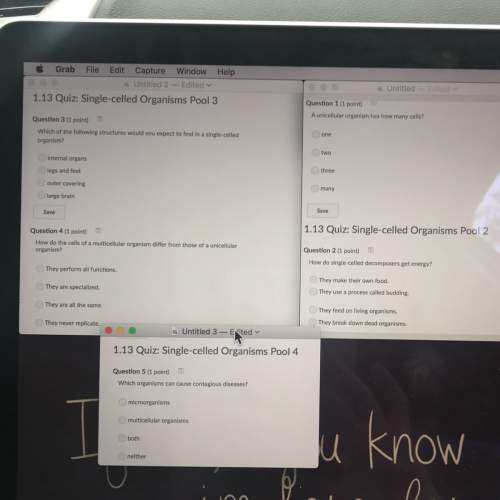
Researchers conducted an experiment to identify the effects of three different hand sanitizers on the growth of bacteria. the researchers grew one type of bacteria in twenty-four identical covered petri dishes. then, they opened eighteen petri dishes and applied the three hand sanitizers to six petri dishes each. they left the remaining six petri dishes closed as a control group. when the researchers measured the growth of bacteria two days later, the six dishes that had no hand sanitizer showed the least amount of bacterial growth. the researchers concluded that not using any hand sanitizer would lead to the least bacterial growth. which statement best explains why the researchers’ conclusion was not justified? a. the experiment tested too many variables. b. the control group was not treated the same as the experimental group. c. the sample size of twenty-four petri dishes is not lathe enough. d. the single type of bacteria i not adequate to making any conclusions.

Answers: 1


Another question on Biology

Biology, 22.06.2019 03:00
Agenus is a taxonomic grouping that identifies a collection of species. when a scientist discovers a new species, how is this species assigned to a genus
Answers: 1

Biology, 22.06.2019 05:00
Jason adds the antibiotic penicillin to a bacterial culture. the bacteria develop genetic modifications in their genome, which gives them resistance to the antibiotic penicillin. what caused this genetic modification?
Answers: 2


Biology, 22.06.2019 08:40
What best explains whether bromine (br) or neon (ne) is more likely to form a covalent bond? bromine forms covalent bonds because it has seven valence electrons, but neon has eight valence electrons and already fulfills the octet rule. bromine forms covalent bonds because it has many electron shells, but neon has only two electron shells and is tightly bound to its electrons. neon forms covalent bonds because it can share its valence electrons, but bromine has seven valence electrons and can gain only one more electron. neon forms covalent bonds because it has only two electron shells, but bromine has many electron shells and will lose electrons in order to fulfill the octet rule.
Answers: 3
You know the right answer?
Researchers conducted an experiment to identify the effects of three different hand sanitizers on th...
Questions



Biology, 12.12.2019 13:31

Mathematics, 12.12.2019 13:31










Mathematics, 12.12.2019 13:31



Social Studies, 12.12.2019 13:31

Geography, 12.12.2019 13:31






